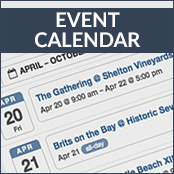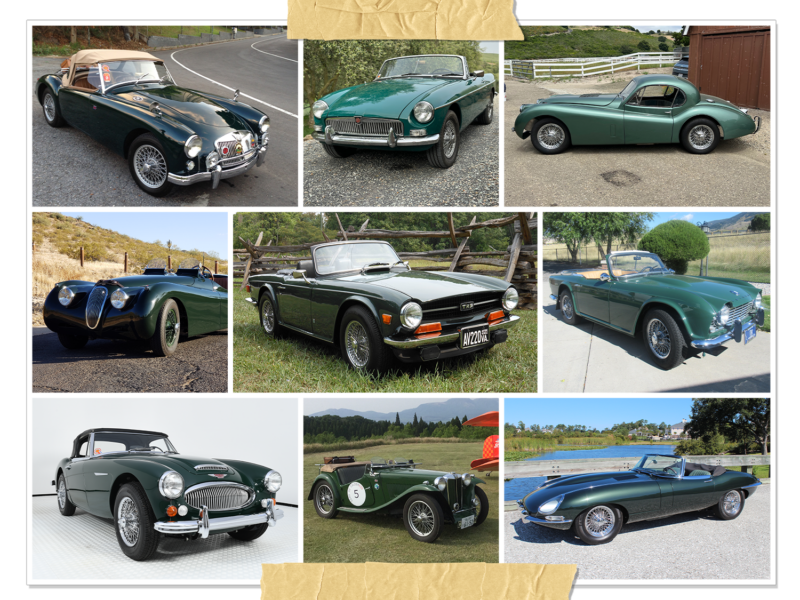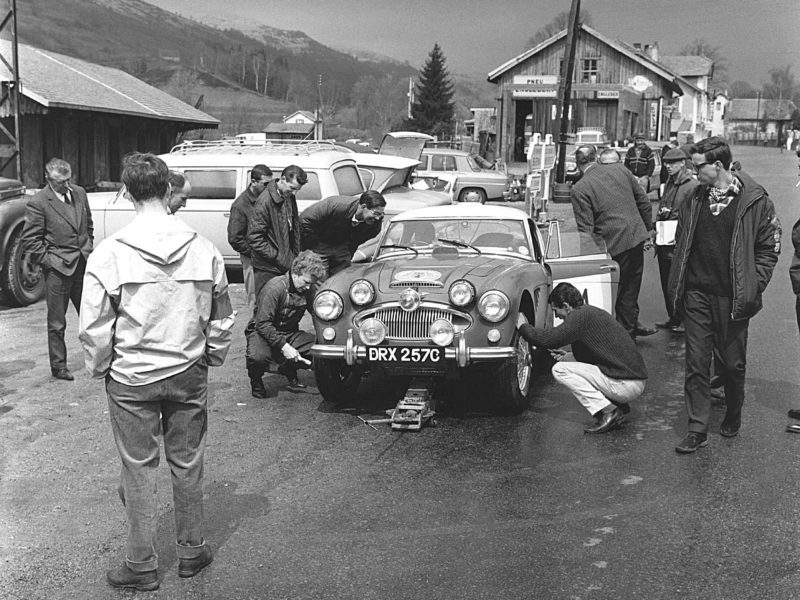We are delighted to welcome Paul as a regular contributor to MossMotoring. The son of Ken Richardson, renowned Triumph competition driver, Paul has visited these shores on several occasions and we hope to welcome him back soon from his home base in England. In the meantime, enjoy his unique stories told in his inimitable style, of the early days of Triumph and other British classics!
Since being invited by your Editor to write a regular column in Moss Motoring, I have been wondering how to introduce myself, and what to write about that would interest both Triumph and MG enthusiasts. After some thought, I finally decided to relate some of my earliest experiences with motor cars to give readers an insight into my background.
From an early age I’d grown up with racing cars. In addition to my regular visits to the ERA/BRM workshops in Bourne when only a small boy, I often watched my late father testing ERAs and the V16 BRM at Folkingham Airfield, the test circuit 11 miles from my home. Armed with my favorite corned beef and tomato sandwiches and a bottle of pop, I would be taken to Folkingham by my Dad or sometimes by my late godfather, Raymond Mays, in one of his famous Bentleys. I still have crystal clear memories of those marvelous, exciting days and the broken silence when the VI6 engine fired up with an ear-shattering scream, as my father began another day’s testing. Above all else, it was the scream of the V16 and the intoxicating smell of alcohol fuel and Costrol R that was to draw me inevitably to motorsport.
I was 10 years old when Ken took his first “competition” TR2, MVC575, to Jabbeke in Belgium to achieve the 124.095 mph speed record for two liter production sports cars, and I naturally became a Triumph fanatic thereafter. I have vivid memories of learning to drive in some of Ken’s competition cars (without his permission!) by maneuvering them up and down our driveway and, when the coast was clear, on the country roads near our home. (All highly illegal!)
From my early teens, I was always tinkering with engines, and developed a powerful passion to work on racing cars. Luckily for me, there were plenty of people in and around Coventry who owned racing cars. For example, “Soapy” Sutton, the works Jaguar test driver, lived next door to us, so I experienced many trips in experimental Jags. I also would cycle miles just to be near a competition car and would offer to help out doing any menial task that was required.
There was a particular racing car called the Djinn that was to play an incredible part of my pre-apprenticeship days. It was the last of three single-seater hillclimb specials built and raced by the late Rupert Instone M.B.F, who lived 300 yards from us in Coventry. Roop, as we called him, was a close friend of Ken’s from the war years and owned Earlsden Engineering, a well-respected precision engineering business in Coventry. Roop was one of the most priceless and lovable characters I’ve ever met. The Djinn was powered by a supercharged JAP engine and had no differential because Roop thought that having a cliff was cheating! I often helped him prepare the Djinn for the many hillclimbs he took part in at Shelscy Walsh, near Worcester, and what fun those days were! The car ran on alcohol fuel and because of several hilarious incidents Roop had in his racing days, I’ve decided to include one that always amuses me.
One Sunday morning, Roop found an old rusty tin of racing fuel (ever known as “bang” water!) in his garage. He opened the top and the contents seemed to start moving and changing color in a most threatening manner. He gently replaced the top and walked round to our house where he said to my father (who was wrestling with a boiled egg and a hangover at the time), “We’ve got a problem, mate.” He explained his experience to Ken who said, “I’ve not got a problem, Roop, because the tin’s not in my garage!” Eventually Ken walked round to Roop’s house to inspect the tin, with myself as an interested bystander.
The fuel mix in the tin had long been forgotten, but Ken detected ether, which is highly volatile, and he became nervously suspicious of the other fuel components. Panic broke out when Roop’s wife, Freda, walked into the garage with a lit cigarette in her mouth! Eventually my father persuaded Roop that the safest thing to do was to gently (some racing fuels can be shock sensitive) tip the contents of the tin into a bath full of water to denature it. Roop agreed, and deciding to do the necessary later, enjoyed a couple of pink gins with Ken on the patio.
The explosion happened the next morning! Roop had decided, in his wisdom, to tip the contents of the tin directly down the roadside drain outside his house. Ignition was caused by the unsuspecting mailman, who casually flicked his cigarette butt down the drain as he pedaled by on his push bike! The explosion woke Lewis Dawlrey (a senior engineer at Standard Triumph who lived opposite Roop) and just about everyone else in our road! Roop related later that, after he had given the scorched postman a cup of hot, sweet tea and had levered the drain cover back, he advised him to take the matter up with Coventry County Council, as the incident had doubtless been caused by methane gas due to rotting vegetation in the pipeline!
After leaving school in 1959, I started my apprenticeship at S. H. Newsome and Son, the main Standard, Triumph, and Jaguar distributor in Coventry. Coincidentally, 1999 is the 40th anniversary of the year when I first started work, and also the 40th anniversary of the launch of the Triumph Herald. I have many memories of the dear old Herald, mainly due to the mechanical problems the car suffered and all those darned water leaks!
Like any new apprentice in those days, I traditionally was given the lousy jobs, like cleaning down pans or fetching things from the stores for the shop mechanics. There were, I remember, a multitude of very useful “service items” for budding mechanics to obtain—until they knew better—including tins of high voltage ignition sparks, high and low compressions, differential amperages, clutch slips of all sizes, piston ring gaps, striker plate clearances, sump suckers, crankshaft glue, and manifold vacuums! Special tools included a carburetor tuning fork, a piston slap diffuser, a radiator matrix gauge, a push rod puller, a double-acting flyback ring remover, a single tree countershaft, and the piece de resistànce, an item of electrical test apparatus ever known as a “control box positivity amplitude and flashback detector!”
In those happy days I worked on all the Standard, Triumph, and Jaguar cars in production at the time, including, of course, sidescreen TRs. There were also plenty of Mayflowers and 1800 Roadsters still around. My wages were three pounds per week and my lasting memories of my first year at Newsome centered on the problems we had with the first Triumph Heralds—especially the water leaks I mentioned earlier!
My main lousy job on the Herald was being shut inside the boot with a flashlight to spot leaks induced by mechanics, who squirted high pressure water hoses at the boot lid and the spare tire well. I learned scuba diving in Herald trunks, and was probably the only mechanic in England who was fully proficient at checking the pressure of a Herald spare tire under water! These water leaks had a very unpleasant side effect because the glue used to fix the carpels would denature due to constant soakings. Such denaturing led to many a wet Herald, stinking something awful! It was one of those aromas that made your stomach turn and I always dreaded Saturday mornings at Newsomes, because there would be a regular influx of wet carpet jobs—some of which were made worse by one of the mechanics!
Wally, for that was his name, would devour about two pounds of tripe and onions (A local delicacy!—Ed.) every Friday night, which he washed down with about a gallon of Best Bitter beer at his local pub. Thus, Saturday mornings were spent trying to avoid wet Heralds and a highly explosive Wally—the combined smell of which resembled a pile of dead skunks!
Sid, the shop foreman at Newsomes, was a delightful man who always wore a cap with his white foreman’s coat, and he hated practical jokes, which made him a natural recipient for such actions.The one he hated most was the dreaded “White Feathers.” Dick, my friend, was the master-of-arms of the White Feathers and most other practical jokes. He would lay hidden on top of the engine shop with two white goose feathers held in a V formation, with the ends daubed with a thick dollop of agricultural grease. When Sid would walk by on his way to the reception office, a long aim would descend from the roof of the engine shop and stick the feathers on top of Sid’s cap. He would sometimes walk around for hours sporting the feather V sign, as the staff apparently took no notice to prolong the joke as long as possible.
Sid’s eventual fury when he discovered the feathers was always made worse if a customer pointed them out while he was sitting in his reception office! This particular blow to his dignity was a major shock to his system which fired his temper—and brought out his slammer. He never used bad language, but his rebukes always contained thinly disguised swear words. He would bellow out, “If I f-f-floppin’ well find out who stuck them f-f-lloppin’ f-ffeathers on me, I’ll kick his floppin’ backside all the way from here to C-CCoventry Cathedral!”
Finally, it was only last year, as a guest of the Standard Club Rally in Peterborough, that I bumped into Paul Newsome—the son in S. H. Newsome and Son. I hadn’t seen Paul for many years and it was a great pleasure for me to bump into him once again and have a chat. I spoiled him under his vintage Standard car, with overalls on and hands dirty, fixing a failed universal joint. This made our meeting all the more pleasurable for me because our meetings 40 years ago were always in somewhat reversed circumstances! Small world, isn’t it?
See you next issue…
Paul Richardson







'Still Triumphant' has no comments
Be the first to comment this post!